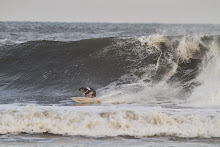We’re desperately trying to finish two posters for the Western Society of Naturalists Meeting. It is coming right up.

We have now actually tested several alternative hypotheses consistent with these attack observations.
1. 1.) Lobsters are attacking because there is something in the water (perhaps crowding pheromones, for example) that directly makes them more aggressive. Rob, Howard, Chris
Test: Lobsters that attacked in the reserve were held in identical lab conditions as lobsters from outside the reserve.
This figure shows that lobsters caught off the preserve (we did not test these behaviorally, but their responses were 94% certain to be “no pounce”.) needed to starve in the lab for 7 days before they would attack a sea hare. The attack readiness of lobsters from inside the reserve depended on their behavior. Lobsters that did not attack proffered sea hares in the field waited statistically just as long as the outsiders. Lobsters that DID attack sea hares inside the reserve were ready to eat in the lab much sooner (a little more than 2 days). Because the conditions were identical in these experiments, the lobster’s state, rather than something about its environment seems to be driving its behavior.

2.) Lobsters that fail to attack a sea hare are just not hungry (Klaus). We finally tested this experiment with three dives, and it wasn’t nearly as scary as we thought it was. 86% percent of sea hares that showed no interest in sea hares, nevertheless pounced upon and ate (attacked) the shrimp we offered them. This isn’t a complete negation. These no-pouncers do appear to be a bit more shy about shrimp than the attackers, 100% of whom ate the shrimp. Nevertheless, it appears to be primarily the unacceptable taste of sea hares, rather than a general aversion to eating, that explains the absence of pounce/attack behavior.
3.) Lobsters only eat sea hares because they are dropping out of the sky. Attached, “normal” sea hares would be unappealing (Rob and John).
Our cage results are in. We performed 7 different control enclosure experiments, i.e., provisioned for 1 or 2 days cages with 5 sea hares in them. We lost no sea hares (!) in these controls. By contrast, when we enclosed lobsters which showed attack behavior, we found that 6 of the nine enclosed lobsters ate at least one sea hare, and some ate as many as 4 animals per day!


No comments:
Post a Comment